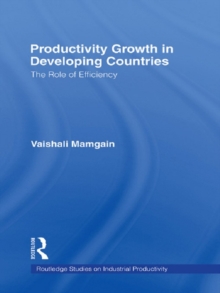
Modeling Structural Change in the U.S. Textile Industry EPUB
by Shu Yang, Barry K. Goodwin
Part of the Studies on Industrial Productivity: Selected Works series
EPUB
Description
This book reviews the experience of the textile and apparel sectors over the post-war period. An econometric study of the cost structure of the industry is undertaken to obtain inferences regarding the existence of structural change and the exact nature of any changes that occurred. A variety of approaches to modeling production technologies in both the textile and apparel sectors are considered. Our results confirm the existence of significant structural breaks which altered the nature of production technologies and economic relationships in these sectors. Our results indicate that a significant amount of labor, which became relatively more expensive as the economy developed after the Second World War, was replaced by capital in these sectors. Our results indicate that new technologies made it easier to substitute capital for labor.
We also give attention to the important role played by textile and apparel imports over this period. Textile trade has traditionally been heavily regulated, most recently by the Multi-Fiber Arrangement of the GATT. Policy changes allowed greater access to developed country markets. This stimulated production in developing countries and thus enhanced the role of imports from developing countries. We argue that this stimulated the structural changes which led to, among other things, the release of labor from these sectors and the concomitant plant closings. These factors also stimulated capital deepening.
Finally, we also consider the issue of substitutability among alternative forms of fibers in the textile sector. Our analysis quantifies demand relationships among natural and synthetic fibers. Our analysis reveals that structural changes often encouraged the use of synthetic fibers.
Information
-
Download - Immediately Available
- Format:EPUB
- Pages:112 pages
- Publisher:Taylor and Francis
- Publication Date:15/01/2019
- Category:
- ISBN:9781135688455
Other Formats
- Paperback / softback from £27.89
- PDF from £24.29
- Hardback from £120.00
Information
-
Download - Immediately Available
- Format:EPUB
- Pages:112 pages
- Publisher:Taylor and Francis
- Publication Date:15/01/2019
- Category:
- ISBN:9781135688455










